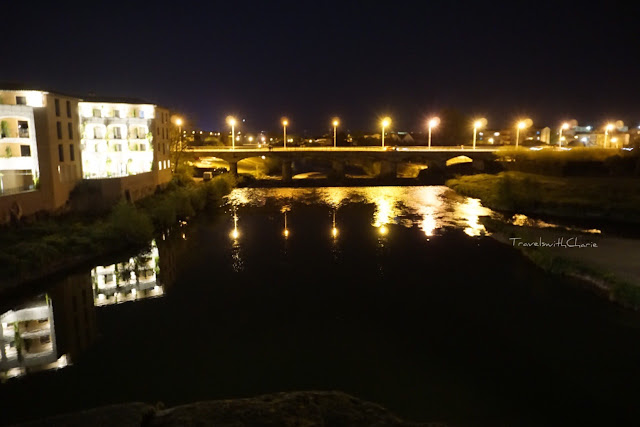It was a cool evening in mid-April when I first laid eyes on La Cité, the fortified medieval village of Carcassonne. I was on the Pont Vieux with a few other souls enjoying the view of the illuminated citadel. Looking up at its outline against the darkening sky was like stepping into a fairy tale.
The new bridge and its reflection on the Aude river added a romantic ambiance to the crisp night air.
Daylight gave La Cité a different presence. Stone cold walls and watchtowers rise above the Aude whose banks were wrapped in green and early spring blooms.
La Cité has a double set of fortifications. The inner walls were built during the Gallo Roman era and the outer walls which can be seen from the image above, were constructed during the reign of Louis IX in the 13th century. La Cité was in decay in the 19th century prompting the French government to order its demolition. The outcry from the residents brought about the extensive renovations made by the architect, Eugène Viollet le Duc, who was commissioned to restore the citadel as a historical monument.
The gothic Basilica of St. Nazaire has the most stunning stained glass windows and this rose window in particular is a fine example.
These stained glass windows are worth a visit.
Narrow alleys in the old town are lined with stone and half timbered houses. The 12th century Chateau Comtal lies within the ramparts of this enchanting hilltop village.
One enchanted evening in Carcassonne, I was transported to a magical place. And what a journey it was!
How to get there:
I arrived by train in Carcassonne. It's best to take a taxi from the train station to hotels near the Pont Vieux, an ideal area to stay because it's an easy stroll to the center of the new town of Carcassonne and within walking distance to the old town, La Cité.
It's quite a climb uphill from the Pont Vieux to the entrance of the old town. Taxis can drop off visitors near the Narbonne Gate. The road up via the Aude Gate is pebbled and not easy on the legs. It's better to take the route leading to the Narbonne Gate.
*****
Images from TravelswithCharie






